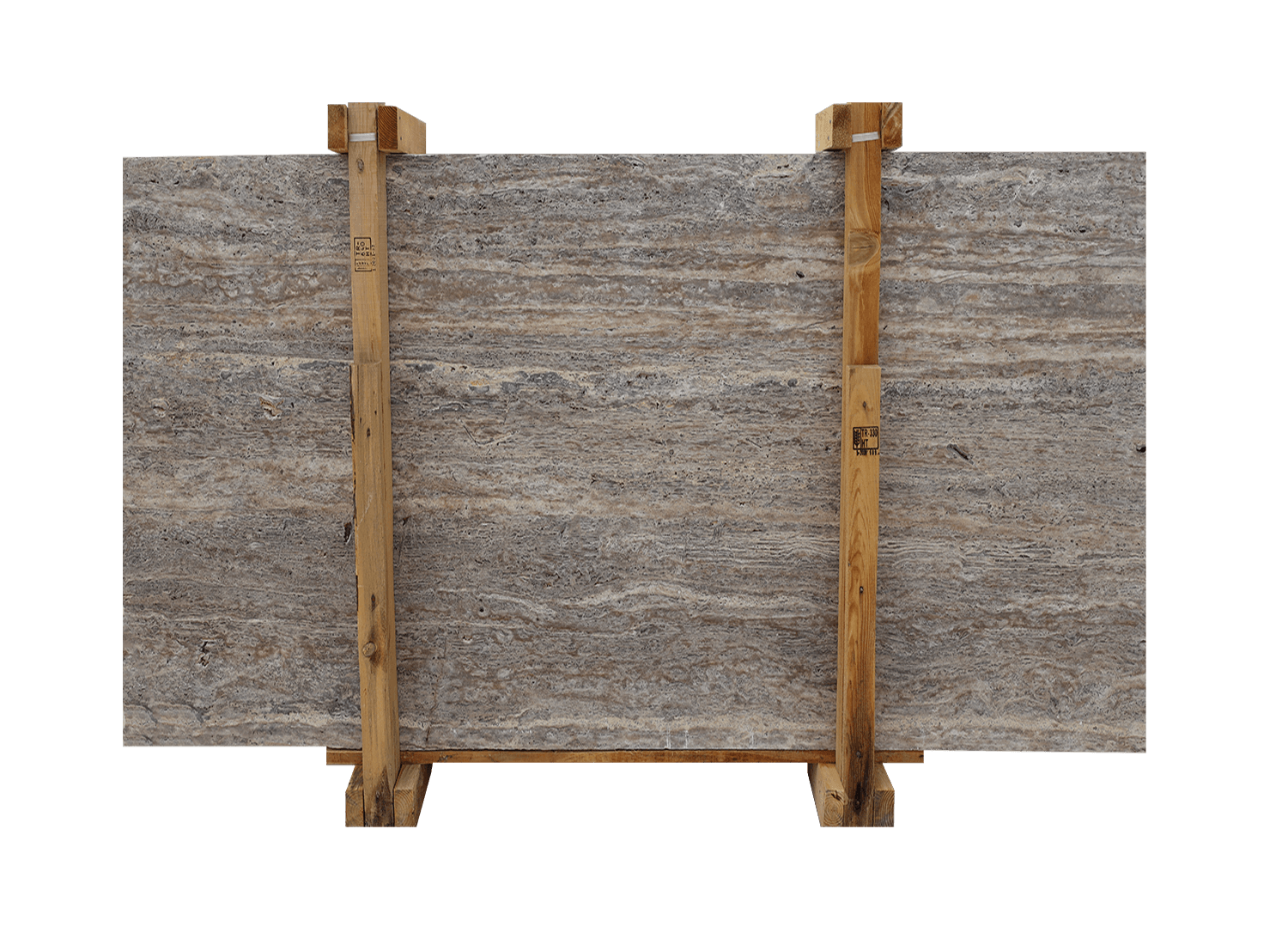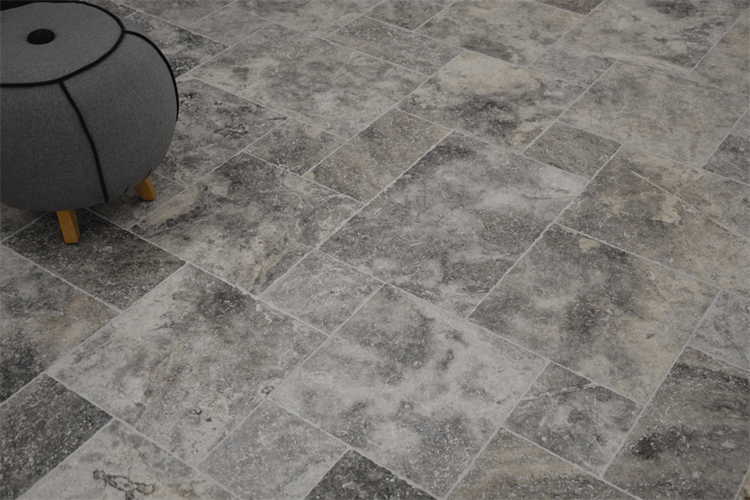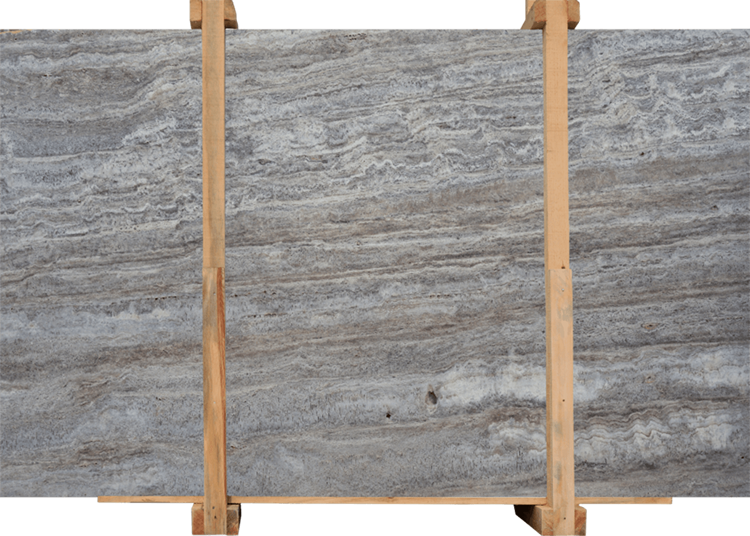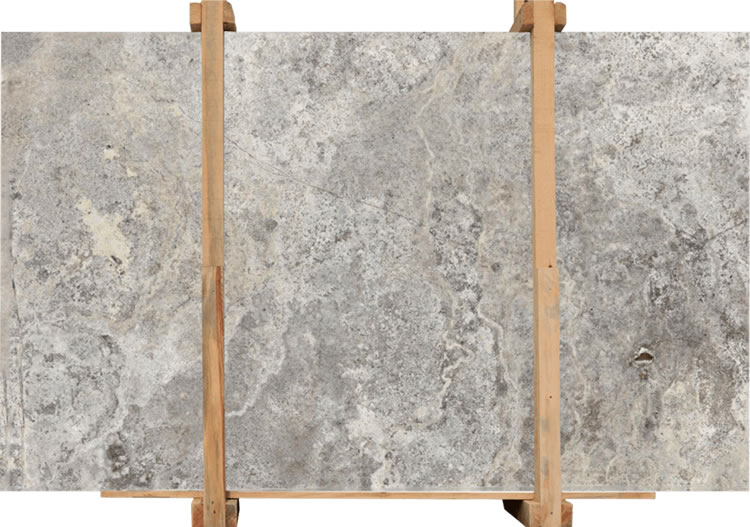Gray travertine is a versatile natural stone known for its unique aesthetic appeal. Its varied hues and textures make it a popular choice for design applications. Key aspects include:
- Versatility: Suitable for flooring, countertops, and wall cladding.
- Color Variations: Ranging from light grays to deeper hues.
- Textures: Offers options for polished or honed finishes.
This guide covers the characteristics of gray travertine, its applications in design projects, installation techniques, maintenance tips and cost considerations. Discover how this stunning material can transform your space with elegance and functionality.

Gray Travertine: Characteristics and Formation
Gray Travertine is a natural stone created from mineral deposits in hot springs. This distinctive process yields a porous structure that exhibits soft, warm gray hues and accommodates various finishes like honed, tumbled, and filled. A favored choice is the natural split-face finish, which highlights the stone’s texture and beauty.
Key Characteristics
- Shades: Ranging from light gray to darker tones to accommodate a variety of design aesthetics.
- Textures: Features unique textures that enhance its visual appeal and tactile experience.
- Mineral Composition: Contains various minerals that contribute to its durability and distinctive look.
Comparison with Other Natural Stones
- Marble: While marble offers elegance, gray travertine offers a more robust texture and better slip resistance.
- Slate: Slate is denser and less porous than gray travertine, making travertine easier to work with for intricate designs.
Pros and Cons of Using Gray Travertine
Pros:
- Durable and long-lasting
- Versatile for indoor and outdoor applications
- Excellent water resistance (low absorption rate)
Cons:
- Requires regular sealing to maintain appearance
- Porosity can lead to staining if not properly cared for
Gray travertine tile stand out due to their blend of beauty and functionality, making them an ideal choice for various projects.

Discovering the Many Uses of Gray Travertine in Design Projects
Gray travertine is a versatile choice for many interior and exterior uses. Its unique color variations and textures make it suitable for various environments, improving both appearance and practicality.
Common Uses
- Flooring: Gray travertine tiles provide a sophisticated look for living spaces and blend seamlessly with contemporary and traditional décor.
- Countertops: Ideal for kitchens and bathrooms, Gray Travertine countertops offer durability while enhancing the overall design.
- Wall Cladding: This natural stone can transform walls into stunning focal points, whether used indoors or out.
- Architectural Features: Features such as fireplace surrounds benefit from the warmth and elegance of Gray Travertine to create inviting atmospheres.
Popular Choice for Outdoor Spaces
Gray travertine’s properties make it a favored option for outdoor applications:
- Durability: It withstands various weather conditions, maintaining its beauty over time.
- Heat Resistance: The stone remains cool underfoot even in direct sunlight, making it comfortable for outdoor areas.
Landscaping Integration
Incorporating gray travertine into landscaping projects can significantly enhance curb appeal. Consider these ideas:
- Patios and Walkways: Create elegant outdoor living spaces that encourage relaxation.
- Pool Coping: Use gray travertine around pools to provide a non-slip surface while harmonizing with natural surroundings.
- Garden Borders: Define garden spaces with stylish borders that complement plant life.

Silver Travertine Tiles
Silver travertine tiles are a stunning option for any space, offering both elegance and versatility. Known for its unique appearance and soft, warm gray tones, these tiles can enhance various design aesthetics in both interior and exterior design projects. In addition to its elegant aesthetic, Silver Travertine offers adaptability to different design styles and applications, making it ideal for backsplashes and other surfaces. Its unique qualities make it a popular choice for homeowners and designers alike, as well as a trusted option from reputable manufacturers.
For larger installations or surfaces that require greater durability, consider using travertine slabs in addition to these tiles. The adaptability of gray travertine allows you to explore creative arrangements that suit your individual style. Whether you’re looking for modern elegance or rustic charm, this natural stone is an excellent choice.
Selecting the Best Finishes for Your Gray Travertine Tiles
Selecting the right finish for your gray travertine tiles can significantly impact both aesthetics and functionality. Two primary finishes available include:
Honed Finish
This creates a smooth, matte surface that is ideal for indoor applications. Its non-reflective quality provides a sophisticated look while minimizing the appearance of scratches and wear.
Tumbled Finish
This offers a more textured, rustic appearance with rounded edges. Perfect for outdoor spaces, tumbled finishes provide better traction, making them suitable for pool areas and patios.
Another essential consideration involves the choice between filled and unfilled tiles:
Filled Travertine Tile
These tiles have been filled with resin or cement to cover natural voids. This enhances durability by preventing dirt accumulation in the holes while providing a uniform appearance.
Unfilled Tiles
These retain their natural texture and character, showcasing unique patterns and colors. While they may require more frequent cleaning, unfilled options offer a more authentic look.
Understanding these finishes allows you to tailor your design choices to both style preferences and practical needs. Gray travertine tiles can thus be transformed into stunning focal points that elevate your space’s overall ambiance.

Maintenance tips to keep your gray travertine looking great
Maintaining the elegance of your gray travertine tiles involves straightforward cleaning and sealing practices. Adopting these methods will help preserve their appearance and longevity.
Recommended Cleaning Methods
- Soapy Water: Use a mild pH-neutral soap mixed with warm water. This gentle solution is effective in removing dirt without damaging the stone.
- Soft Cloth or Mop: Avoid abrasive materials. Instead, use a soft cloth or mop to wipe down the surface, ensuring a scratch-free finish.
- Avoid Harsh Chemicals: Stay clear of acidic or abrasive cleaners that can etch or dull the surface.
Importance of Sealing
Sealing your gray travertine tiles during installation is crucial for long-term protection.
- Prevents Discoloration: A quality sealant acts as a barrier against stains and moisture while maintaining the natural look of the stone.
- Enhances Durability: Sealed tiles are more resistant to wear from foot traffic, making them ideal for high-traffic areas.
Implementing these maintenance tips ensures that your gray travertine tiles remain as stunning as the day they were installed, adding enduring beauty to your space.
Cost Considerations When Buying Gray Travertine Tiles (Including Shipping Options)
Purchasing gray travertine tiles involves several cost factors that can influence your budget. Here’s a breakdown:
1. Tile Pricing
Costs for gray travertine tiles typically range from $3 to $15 per square foot, depending on quality and finish.
2. Shipping Costs
Freight costs can add a significant amount to your total. Consider these options:
- Local Suppliers: Check local suppliers for reduced freight costs or free delivery offers.
- Bulk Purchases: Buying in bulk can lower the unit price and reduce shipping fees significantly.
3. Wholesale Account Options
Establishing a wholesale account with suppliers may provide access to better pricing and additional discounts.
Strategies for cost-saving delivery methods include:
- Freight Cost Savings: Opt for consolidating shipments when possible to share transportation costs.
- Local Pickup Information: If feasible, pick up your tiles directly from the supplier to avoid shipping fees altogether.
Understanding these cost considerations ensures you make informed decisions while purchasing gray travertine tiles, enhancing both your space and your budget.
Transform Your Space with the Timeless Beauty of Gray Travertine Tile!
Transform your space with natural stone by choosing gray travertine tiles. This versatile material is perfect for both exterior design projects and interior design projects, offering:
- Aesthetic Appeal: Unique color variations and textures enhance any design style.
- Durability: With excellent resistance to heat and moisture, it’s ideal for both indoor and outdoor applications.
- Cohesion: Bridges gaps between different design elements, creating a harmonious look throughout your home.
Investing in gray travertine not only elevates your space but ensures lasting beauty and functionality. Embrace the timeless elegance that gray travertine brings to your surroundings.
FAQs (Frequently Asked Questions)
What is gray travertine and why is it considered a versatile natural stone?
Gray travertine is a type of natural stone known for its unique textures and aesthetic appeal. Its color variations and natural patterns make it suitable for a variety of design applications, from flooring to countertops, enhancing both interior and exterior spaces.
How is gray travertine formed and what are its key characteristics?
Gray travertine is formed by the deposition of mineral-rich water, resulting in distinct shades and textures. Key characteristics include its unique mineral composition, which distinguishes it from other stones such as marble and slate, and its durability.
What are the common applications of gray travertine in design projects?
Gray travertine is commonly used for flooring, countertops, wall cladding and architectural features such as fireplace surrounds. Its versatility makes it a popular choice for both interior and exterior use.
What are the finishing options for gray travertine tiles?
Gray travertine tiles are available in a variety of finishes, including honed and tumbled. Filled tiles offer increased durability, while unfilled options offer a more natural look. Choosing the right finish can affect both appearance and longevity.
What maintenance tips should I follow to keep gray travertine tiles looking their best?
The best way to take care of gray travertine tiles is to clean them regularly with soap and water. In addition, sealing the stone during installation is crucial to prevent discoloration and preserve its appearance over time.
What costs should I consider when purchasing gray travertine tile?
Consider the costs associated with shipping options and potential freight savings when purchasing gray travertine tiles.

 Türkçe
Türkçe Deutsch
Deutsch العربية
العربية Français
Français Español
Español